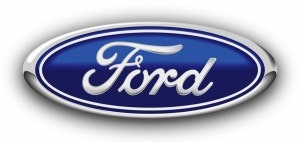Jenny Lin, Ford Motor Company (NYSE:F)’s senior U.S. economist, excitedly announced an 18% jump in Ford’s April sales. The announcement follows on the heels of an impressive first-quarter earnings report. Ford’s Q1 2013 earnings reveal a company that is ideally situated to take advantage of expected acceleration in the U.S. and Chinese auto sales through 2015.
Ford’s Q1 2013 results

The Q1 results included a record $2.4 billion pre-tax profit on operations in North America, including a double-digit operating margin and an increase in market share against its competitors. Also positive, though less financially significant, was the company’s result in the “Asia Pacific Africa” regional market, where Ford Motor Company (NYSE:F) earned a promising $6 million from operations while growing its market share by 30%. The company’s overall decline in profit stemmed from unfavorable exchange rate fluctuations in South America and high losses in Europe following the implementation of Ford’s October 2012 European transformation plan.
Positive trends
Ford Motor Company (NYSE:F)’s successes in North America and Asia place it in a strong position to take advantage of macroeconomic trends in the auto industry over the next two years.
In 2012, the average age of vehicles in the U.S. reached an all-time high of 11 years, as consumers were reluctant to make large capital expenditures in the midst of high unemployment and stagnant economic growth. Though U.S. auto sales have trended upwards in the last three years and are expected to surpass 15 million in 2013, sales have yet to reach the pre-crisis levels of 2006 and 2007 when annual sales were in excess of 16 million.
The prevailing sub-peak sales figures along with the record high average vehicle age strongly suggest considerable pent up demand in the U.S. auto market. Analysts expect this pent up demand to be relieved in the coming years, resulting in substantial sales increases, with new car sales rising to pre-crisis sales figures by 2015.
Similarly, expected growth in the Chinese market, of which Ford Motor Company (NYSE:F) currently controls only 3.6%, presents an exciting possibility for the company. After posting weak sales figures in 2012, China, the world’s largest auto market, is expected to experience a 7% increase in vehicle sales in 2013. With Japanese car manufacturers struggling in China due to political disputes for which no resolution is imminent, increased Chinese demand presents an opportunity for Ford to appreciably improve on its 2012 performance in the growing market. Ford’s Q1 2013 results in the region represent a positive step in this direction.
Concerns
The most pressing threat to Ford’s ability to profit from the expected growth in demand for cars in North America and Asia is a possible resurgence of Japanese manufacturers in those markets. Prime Minister Shinzo Abe’s package of economic reforms, known as “Abenomics”, has had the effect of devaluing the yen by 20% against the U.S. dollar since November 2012.
A devalued yen gives Japanese car-makers, most importantly Toyota Motor Corporation (ADR) (NYSE:TM), the world’s largest auto maker, a price advantage over Ford among price-conscious consumers. Toyota Motor Corporation (ADR) (NYSE:TM) has already begun profiting from the yen’s depreciation; its recent earnings report showed a 159% increase in quarterly net profit.
Despite the advantage of a cheap yen, Japanese automakers are unlikely to outperform Ford in the growing American and Chinese markets, as the Chinese continue to display strong anti-Japan consumer sentiment and American consumers continue to show strong preference for American brands. Even with a significantly devalued yen, Toyota’s April 2013 sales in the US dropped by 1.1%, a sharp contrast to Ford’s 18% April surge.
Valuation
Though Ford’s stock price has increased 15% over the last six months, its shares are still available at an attractive price compared to its competitors. Ford is trading at a price to earnings ratio below 10, while both General Motors Company (NYSE:GM) and Toyota trade in a P/E range between 10 and 20. This price discount partially reflects Ford’s higher debt to capital ratio, a result of having avoided filing for chapter 11 bankruptcy in 2009, unlike its American competitors GM and Chrysler.
Despite restructuring through bankruptcy in 2009 and successfully paying off loans from the American and Canadian federal governments in April 2010, GM’s profitability has not yet fully rebounded. Its 2.83% profit margin trails the industry average and Ford’s industry-beating 4.27% margin. Like Ford, GM is engaged in significant European restructuring, which is affecting the company’s profitability. Though it cut $300 million in costs in Europe in Q1 2013, GM still lost $175 million on its European operations in the quarter, and after 13 straight years of losses in the region, it doesn’t expect European operations to return to profitability until mid-decade.
With a price discount to its competitors and a strong and still improving position in the Chinese and American auto markets that are primed for growth through 2015, Ford is an attractive buy at current prices.
The article This Automaker Looks Set to Accelerate originally appeared on Fool.com and is written by Colin Tweel.
Colin is a member of The Motley Fool Blog Network — entries represent the personal opinion of the blogger and are not formally edited.
Copyright © 1995 – 2013 The Motley Fool, LLC. All rights reserved. The Motley Fool has a disclosure policy.